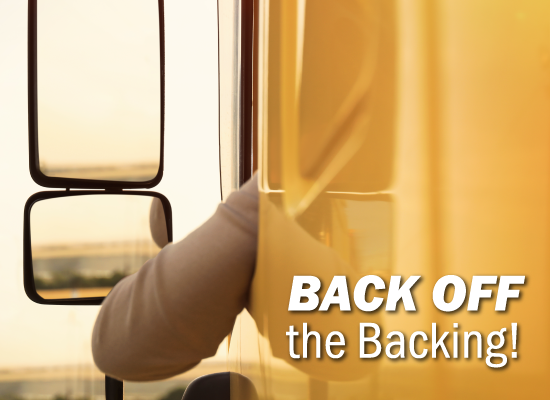
The safest backing maneuver is the one you don’t have to make.
As you get to know your route and its regular stops, look for ways to reduce the amount of backing required. Think ahead to avoid situations that will require you to back. When possible, pull through parking spots to enable a forward exit.
You may have to back your vehicle on occasion and need to know the safest way to do so.
Before you begin the maneuver, take inventory of your surroundings including uneven surfaces, overhead and side obstructions, sidewalks and driveways. Next, make sure your mirrors are adjusted to provide the best vision possible. Avoid backing into residential driveways or in parking lots as they are most likely to present changing hazards.
Eliminate distractions by turning off your radio, heater, fan or anything else that could disrupt your concentration. Do not talk on the phone or radio while backing!
Position your vehicle to back to the driver’s side whenever possible to minimize blind spots. Back first; do not stop to perform other tasks or pause if you must back as conditions may change quickly if you do not back immediately. Begin your backing slowly at a controlled speed. Take your time to ensure you can react to changing situations. Let others know you are backing by using a backing alarm or honking your horn periodically. You should use a reliable guide to help with especially difficult backing situations.
At all times during the maneuver, think GOAL: Get Out And Look. If you need to GOAL multiple times, you should reconsider backing at all to avoid a collision.
Download the Safe Backing flyer as a refresher on the best way to back your vehicle.
Categorized in:
-
Transportation Safety
-
Injury Prevention
-
Driving Techniques
ClickToAddCategories
No categories have been created yet.
Community
Company Updates
Driver Recruitment
Investor News
Transportation Safety
Claims
Driver Management
Driving Techniques
Distracted Driving
Seasonal Driving Tips
Sharing the Road
Health & Wellness
Injury Prevention
Regulations
Security & Cargo Theft
Vehicle Inspections
Weather Conditions
Workplace Safety
Workers Compensation
Done